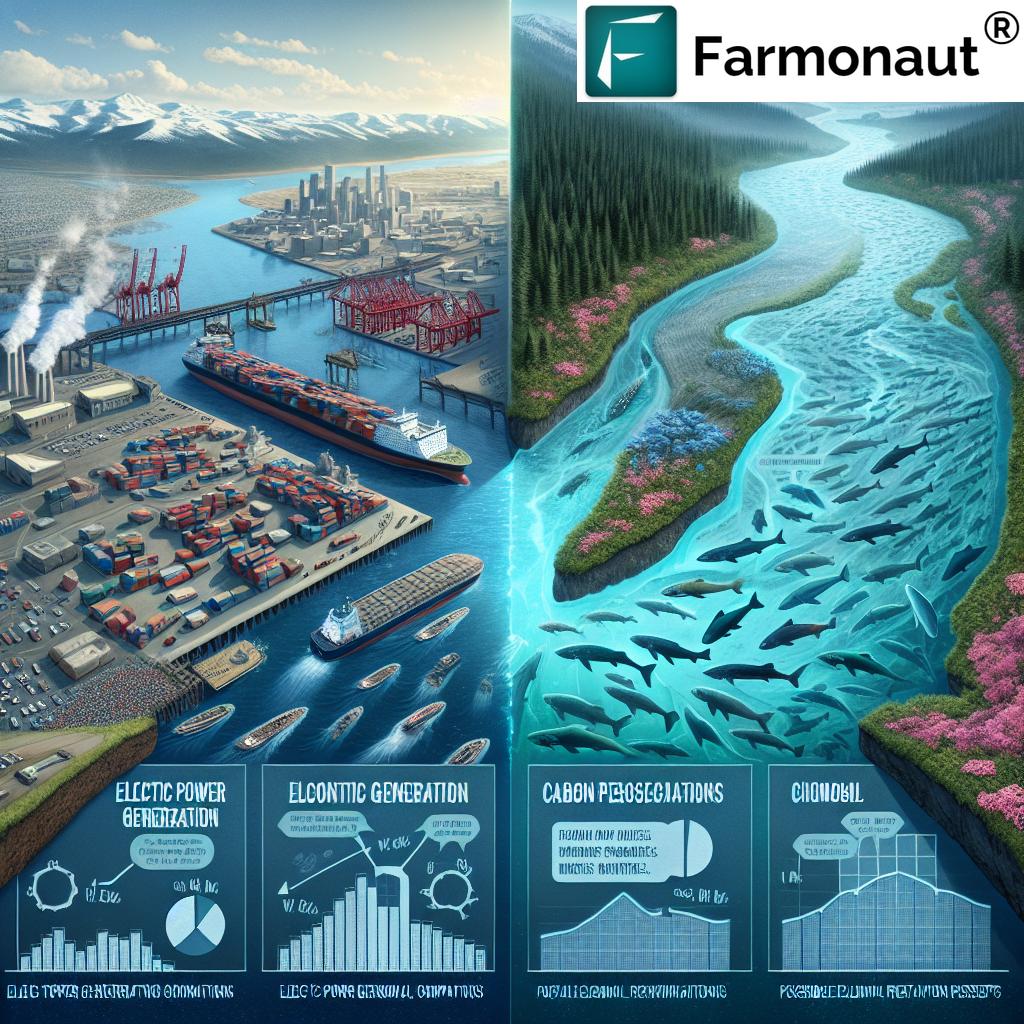Washington’s Energy Future: The Debate Over Snake River Dams and Clean Power Security
“The four lower Snake River dams in Washington state provide power to 750,000 homes and businesses.”
In the heart of the Pacific Northwest, a crucial debate is unfolding that could reshape the region’s energy landscape for generations to come. We find ourselves at a crossroads where the future of Washington’s energy security hangs in the balance, with the Snake River dams removal debate taking center stage. As we delve into this complex issue, we’ll explore the multifaceted implications of the proposed legislation to protect these vital hydroelectric power sources and examine the potential consequences for Washington state’s energy security, economy, and environment.
The Legislative Push to Protect Snake River Dams
Senator Matt Boehnke from Kennewick has taken a bold step by introducing legislation aimed at safeguarding the four lower Snake River dams. This initiative, encapsulated in Senate Joint Memorial 8010, aligns with and formally supports U.S. Rep. Dan Newhouse’s Northwest Energy Security Act. The proposed federal act is designed to preserve the essential services these dams provide, including hydroelectric power benefits, irrigation networks, and overall economic stability for the region.
As we analyze this legislative move, it’s crucial to understand the broader context of Washington state energy security and the role these dams play in maintaining it. The four dams in question—Ice Harbor, Lower Monumental, Little Goose, and Lower Granite—are not just concrete structures; they are the lifeblood of the region’s power grid and agricultural prosperity.

The Critical Role of Snake River Dams in Regional Infrastructure
We cannot overstate the importance of these dams to the Northwest’s infrastructure. Positioned strategically between Clarkston and Pasco, these engineering marvels are pivotal in generating reliable, carbon-free energy that serves approximately 750,000 homes and businesses in the area. This clean energy production is not just a statistic; it’s a cornerstone of the region’s commitment to sustainable power generation.
Moreover, the dams serve multiple purposes beyond electricity generation. They are integral to:
- Supporting extensive irrigation networks for agriculture
- Facilitating river-based transportation
- Contributing to regional fish conservation efforts
- Providing flood control measures
As we consider the lower Snake River dams economic impact, it’s clear that their influence extends far beyond the energy sector, touching every aspect of life in the Pacific Northwest.
The Environmental and Economic Stakes
The debate surrounding the Snake River dams is not just about maintaining the status quo; it’s about balancing environmental concerns with economic realities. Proponents of dam removal argue that it could benefit salmon populations, while those in favor of keeping the dams emphasize the potential negative consequences of their removal.
Senator Boehnke has highlighted several critical points:
- Removing the dams could lead to an increase of approximately 3 million metric tons of carbon emissions if replacements come from fossil fuel sources.
- The financial toll could reach up to $800 million in increased electricity costs.
- There’s a potential for a significant 50% surge in Bonneville Power Administration’s rates.
- Local households might face a 25% rise in energy costs.
These projections underscore the complex interplay between environmental goals and economic stability. As we navigate this debate, it’s crucial to consider how these changes could affect the region’s ability to meet its clean energy legislation targets and maintain affordable power for residents and businesses alike.
The Broader Context of Northwest Energy Infrastructure
To fully appreciate the stakes of this debate, we must consider the Snake River dams within the larger context of the Northwest energy infrastructure. These dams are not isolated entities but integral components of a vast and interconnected power system that serves millions across multiple states.
The hydroelectric power generated by these dams plays a crucial role in:
- Stabilizing the regional power grid
- Providing baseload power to complement intermittent renewable sources like wind and solar
- Supporting the region’s growing population and industries
- Helping meet clean energy goals set by various states in the Northwest
As we debate the future of these dams, we must carefully consider how their removal would impact this delicate balance and what alternatives could realistically fill the gap they would leave behind.
Environmental Considerations: Beyond Power Generation
While the energy debate often takes center stage, the environmental aspects of the Snake River dams controversy extend far beyond power generation. We must consider the potential dam removal environmental consequences on multiple fronts:
- Impact on salmon populations and their migration patterns
- Changes to river ecosystems and riparian habitats
- Potential increase in greenhouse gas emissions if replaced by fossil fuel sources
- Alterations to sediment flow and water quality
Balancing these environmental concerns with the region’s energy needs and economic stability is at the heart of this complex issue. It’s crucial to approach these considerations with a holistic view, understanding that any decision will have far-reaching consequences for both nature and human communities.

Irrigation and Agriculture: The Lifeblood of Washington’s Economy
“Washington’s legislative session addressing the Snake River dams debate runs for approximately 90 days, from January to April.”
The importance of irrigation and agriculture in Washington cannot be overstated. The Snake River dams play a pivotal role in supporting the state’s agricultural sector, which is a cornerstone of its economy. Let’s examine the critical aspects of this relationship:
- Water Supply: The dams provide a reliable water source for irrigation, supporting thousands of acres of farmland.
- Crop Diversity: The irrigation enabled by these dams allows for a wide variety of crops to be grown in the region.
- Economic Impact: Agriculture supported by these irrigation systems contributes significantly to the state’s GDP and provides numerous jobs.
- Food Security: The productive farmlands irrigated by the Snake River system contribute to regional and national food security.
As we consider the future of these dams, we must carefully weigh the potential impacts on this vital sector of Washington’s economy and way of life.
The Role of Carbon-Free Energy Sources in Washington’s Future
At the core of this debate is the role of carbon-free energy sources in Washington’s energy mix. The Snake River dams represent a significant portion of the state’s clean energy production, aligning with broader goals to reduce carbon emissions and combat climate change. Consider these points:
- Hydroelectric power is a renewable and carbon-free energy source.
- The dams provide consistent baseload power, complementing intermittent renewables like wind and solar.
- Removing the dams could lead to increased reliance on fossil fuels, at least in the short term.
- The state’s clean energy goals may be more challenging to achieve without these hydroelectric resources.
As we navigate the complex landscape of energy policy, it’s crucial to consider how decisions about the Snake River dams will impact Washington’s ability to meet its climate commitments and maintain a reliable, clean energy supply.
Economic Implications: Beyond the Power Grid
The economic ramifications of the Snake River dams debate extend far beyond the energy sector. We must consider the broader economic ecosystem that has developed around these structures over decades. Key economic factors include:
- Job Creation: The dams support thousands of jobs directly and indirectly.
- Transportation: The river system facilitated by the dams is crucial for moving goods efficiently.
- Tourism and Recreation: The reservoirs created by the dams are important recreational areas.
- Regional Development: The infrastructure associated with the dams has been a catalyst for economic growth in surrounding communities.
Any decision regarding the future of these dams must carefully weigh these economic factors against potential benefits of removal, ensuring that the region’s economic stability is not unduly compromised.
The Federal and State Interplay in Energy Policy
The debate over the Snake River dams highlights the complex relationship between federal and state interests in energy policy. As we navigate this issue, it’s important to understand:
- Federal agencies like the Bonneville Power Administration play a significant role in managing these resources.
- State legislation, such as Senator Boehnke’s proposal, seeks to influence federal decision-making.
- Environmental regulations at both state and federal levels impact the operation and future of the dams.
- Interstate agreements and regional cooperation are crucial in managing shared water and energy resources.
This interplay between different levels of government adds layers of complexity to an already multifaceted issue, requiring careful coordination and negotiation to reach a resolution.
Looking to the Future: Balancing Needs and Priorities
As we look ahead, the challenge lies in finding a balance that addresses environmental concerns, maintains energy security, supports the economy, and respects the diverse stakeholders involved. Future considerations must include:
- Investing in alternative clean energy sources to complement or potentially replace hydroelectric power.
- Developing innovative technologies for fish passage and habitat restoration.
- Exploring economic diversification strategies for communities dependent on the dams.
- Engaging in ongoing dialogue with all stakeholders, including indigenous communities, to find equitable solutions.
The path forward will require creativity, compromise, and a commitment to sustainable solutions that serve the needs of both people and the environment.
Comparative Analysis: The Impact of Snake River Dams
| Aspect | With Dams | Without Dams |
|---|---|---|
| Annual Clean Energy Production (estimated MWh) | 1,000,000 | 0 |
| Number of Homes/Businesses Powered | 750,000 | 0 |
| Estimated Carbon Emissions (tons/year) | Minimal | +3,000,000 |
| Irrigation Impact (acres affected) | 60,000 | Significantly reduced |
| Estimated Electricity Costs (% change) | Baseline | +25% to +50% |
| Economic Impact (estimated $ value) | $8.5 billion annually | Potential $800 million loss |
This comparative analysis clearly illustrates the significant impact the Snake River dams have on various aspects of the region’s energy, economy, and environment. The stark contrasts between the scenarios with and without the dams underscore the complexity of the decision-making process and the far-reaching consequences of any action taken.
The Role of Technology in Addressing Dam Concerns
As we grapple with the challenges surrounding the Snake River dams, it’s important to consider how technological advancements might offer solutions. Innovative approaches could help address some of the concerns while maintaining the benefits of the dams:
- Advanced fish passage systems to improve salmon migration
- Smart grid technologies to enhance power distribution efficiency
- Improved turbine designs to minimize environmental impact
- Cutting-edge monitoring systems for dam safety and environmental metrics
By leveraging these technologies, we may find ways to mitigate some of the negative impacts associated with the dams while preserving their crucial benefits to the region.
Public Engagement and Decision-Making
The future of the Snake River dams is not just a matter for policymakers and experts; it’s a decision that affects all residents of the Pacific Northwest. Public engagement in this process is crucial for several reasons:
- Ensuring diverse perspectives are considered in the decision-making process
- Building consensus and understanding among different stakeholder groups
- Educating the public about the complexities of energy and environmental policy
- Fostering a sense of shared responsibility for the region’s future
As this debate continues, it’s essential that we create opportunities for meaningful public participation and dialogue to shape the outcomes that will affect generations to come.
Conclusion: Navigating Complex Choices for a Sustainable Future
The debate over the Snake River dams encapsulates the challenging decisions we face as we strive for a sustainable and prosperous future. There are no easy answers, but by carefully considering all aspects of this complex issue—from energy security to environmental conservation, from economic stability to cultural heritage—we can work towards solutions that serve the best interests of the region and its people.
As we move forward, it’s crucial that we:
- Continue to gather and analyze data to inform decision-making
- Explore innovative technologies and approaches
- Engage in open and honest dialogue with all stakeholders
- Remain flexible and adaptable in our strategies
The future of Washington’s energy landscape and the broader Pacific Northwest hangs in the balance. By approaching this challenge with wisdom, creativity, and a commitment to sustainability, we can chart a course that honors our responsibilities to both people and the planet.
FAQs
- Q: What are the four lower Snake River dams?
A: The four lower Snake River dams are Ice Harbor, Lower Monumental, Little Goose, and Lower Granite, located between Clarkston and Pasco in Washington state. - Q: How much power do these dams generate?
A: These dams provide hydroelectric power to approximately 750,000 homes and businesses in the region. - Q: What is the main argument for keeping the dams?
A: Proponents argue that the dams are crucial for energy security, irrigation, transportation, and economic stability in the Northwest. - Q: What are the potential consequences of removing the dams?
A: Removal could lead to increased carbon emissions, higher electricity costs, and significant economic impacts on agriculture and transportation. - Q: How does the dam debate relate to salmon populations?
A: Some argue that dam removal could benefit salmon populations, while others contend that the dams’ fish passage systems and conservation efforts are sufficient.
For more information on innovative agricultural solutions and satellite-based farm management, visit Farmonaut. Our technology helps farmers make data-driven decisions for sustainable and efficient farming practices.
Explore our mobile apps for on-the-go farm management:
For developers interested in integrating our satellite and weather data into their systems, check out our API and API Developer Docs.
Earn With Farmonaut: Join our affiliate program and earn 20% recurring commission by sharing your promo code and helping farmers save 10%. Onboard 10 Elite farmers monthly to earn a minimum of $148,000 annually—start now and grow your income!
















